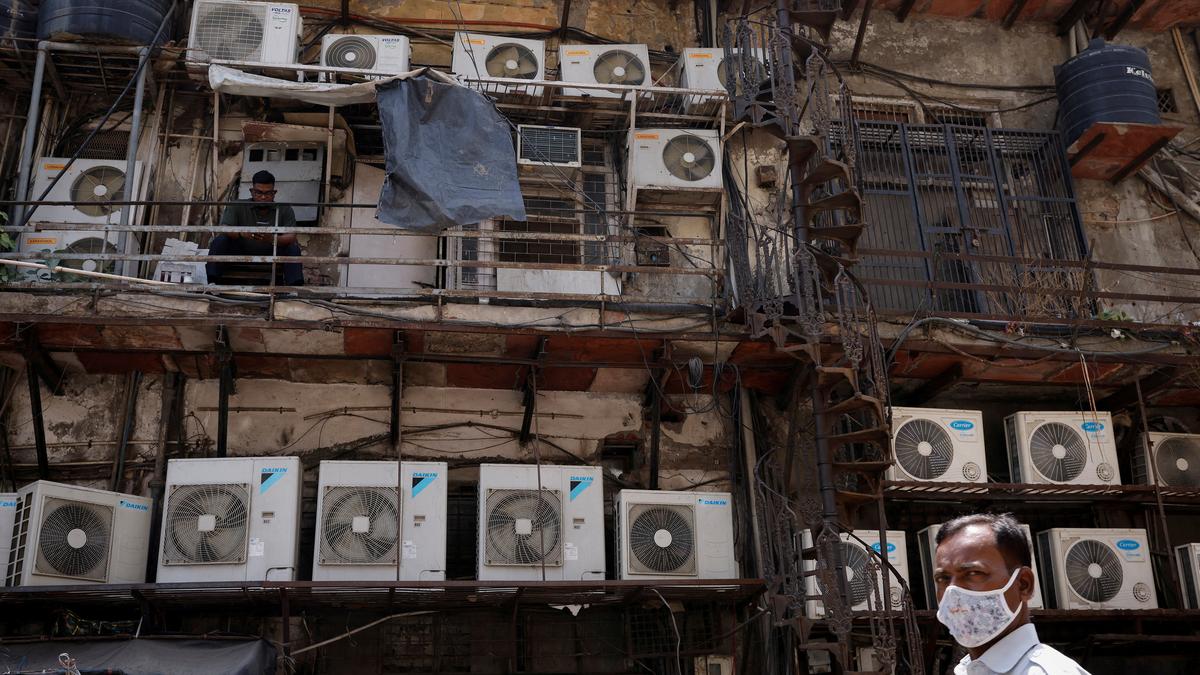Air Conditioner will become the highest Greenhouse Gas (GHG)-emitting appliance in the country, shows survey
By Snehal Mutha
Copyright thehindu

The refrigerant leakage and unnecessary refilling in air conditioning (AC) in India is damaging the climate as total AC-related emissions, including electricity use has reached 156 Mt CO₂e in 2024—equivalent to emissions from all passenger cars in India and become AC will become the highest Green House Gas (GHG)-emitting appliance in the country, claims the survey report by International Forum for Environment, Sustainability and Technology (iFOREST), an environmental think tank.
The 156 Mt CO₂e means 156 megatonnes of carbon dioxide equivalent, a unit of measurement for greenhouse gas emissions. According to the iFOREST findings, “If unchecked, emissions increase to 329 Mt CO₂e by 2035.
“An AC in India, refilled every two years, emits as much GHG as a passenger car. In India, 40% of ACs are refilled every year, which exceeds global norms. ACs should require refilling only once every five years. In India, they are being refilled every two to three years,” shows the iFOREST report.
On Monday (September 15, 2025), ahead of World Ozone Day, iFOREST released findings from the survey on India’s residential air conditioning (RAC) sector, where iFOREST surveyed 3,100 households across 7 cities, including Chennai, Pune, Jaipur, Ahmedabad, Mumbai, and Delhi.
The findings, presented at a report release workshop titled ‘The Climate Cost of Air Conditioning’, highlighted the rapid rise in AC ownership, high refrigerant leakage, sub-optimal servicing, and policy gaps, and recommended comprehensive Lifecycle Refrigerant Management regulations.
“The number of ACs will triple to 245 million in the next 10 years. The consumers are conscious of energy efficiency, but not aware of refrigerants and their environmental costs. We also lack regulations and systems to control refrigerant leakage,” said Chandra Bhushan, CEO of iFOREST.
Lack of policy
The survey also highlighted the need for India’s Cooling Action Plan to cut refrigerant demand by 25–30% by 2037–38. The think tank has also recommended that proper lifecycle refrigerant management (LRM) could avoid 500–650 Mt CO₂e emissions between 2025 and 2035, worth $25–33 billion in carbon credits, while saving consumers $10 billion in unnecessary refilling costs.
“India must adopt a comprehensive LRM regulation, including Extended Producer Responsibility (EPR) for AC manufacturers to recover, recycle, and safely dispose of refrigerants, similar to regulations in countries including Canada, Australia, the EU, China, and Singapore,” said Mr. Bhushan.
More findings
According to the survey, in India, 80% of households own ACs less than five years old, and 40% less than two years old—showing an exponential rise in ownership in just the past five years. In terms of ownership, 87% own one, while 13% own two or more. Nearly 98% of households own 3-star to 5-star rated ACs, showing high awareness about energy efficiency among consumers.
“In 2024, ACs required 32,000 tonnes of refrigerant refills. At an average refilling cost of ₹2,200 per AC, households spent ₹7,000 crore ($0.8 billion). The annual costs will quadruple to ₹27,540 crore ($3.1 billion) by 2035,” shows the survey.



